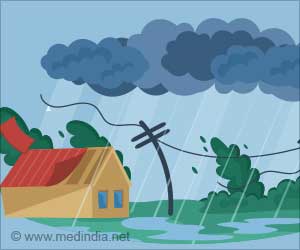An analysis by a team of scientists quantifies the chances of using both green and blue water to adapt to climate change and to feed the world population to tackle future food crises.
An analysis by a team of scientists quantifies the chances of using both "green" and "blue" water to adapt to climate change and to feed the world population to tackle future food crises.
If the overall water resources in river basins were acknowledged and managed better, future food crises could be significantly reduced, according to researchers from Stockholm Resilience Centre at Stockholm University, Stockholm Environment Institute and Potsdam Institute for Climate Impact Research.The current approach to water management considers only blue water, which is river discharge and groundwater.
According to the researchers, this limits the options to deal with increasing water scarcity and water risks induced by climate change.
Under those conditions, over three billion of the current world population are estimated to suffer from severe water scarcity.
The new analysis which additionally accounts for green water, that is water in the soil that stems directly from rainfall, suggests that the actual number is under one billion.
It also shows that wise water management can lift billions out of water poverty.
Advertisement
"Our analysis shows that many water-short countries are able to produce enough food for their populations if green water is considered and managed well," they added.
According to Rockstrom, "We have applied the latest global hydrological modeling and climate scenarios to analyse down to the local village scale, how much water farmers actually can access. Normally this leads to a very gloomy result as only blue water resources for irrigation are considered."
"We have included the rainfall that infiltrates in the soil, which forms the basis for all food production in rainfed agricultural systems. We also highlight an enormous untapped potential due to massive unproductive losses of blue and green water," he added.
The study presents evidence that a better use of green water can form the basis for a new green revolution.
It may also provide the basis for building resilience towards more frequent and intense floods, droughts and dry spells under human-induced climate change.
Source-ANI
ARU














